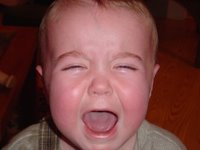So this explains a few things I've been wondering about . . . .

Lengthy, but a fantastic read for anyone who wants to understand American culture(s) or "folkways", as the author calls them. Surveys four colonial American cultures and compares them to the specific regions in Britain in which they originated. The Puritans from Massachusetts (predominantly from East Anglia), the Cavaliers and their servants in Virginia (south and southwestern England), the Quakers in the Delaware Valley (the North Midlands), and the borderlands (think Scots-Irish) people who filled in the backcountry from Western Pennsylvania through Appalachia to parts of the deep South (from north Britain and south Scotland; hence the "borderlands" terminology). Fischer examines ways of speech, dress, marriage, childrearing, religion, architecture, food, government, war and violence, courtship, magic, death and sex, among other things, for each of these people groups. He concludes that each of these easily identifiable American cultures are traceable directly to the regions of Britain from which their originators predominantly came. Except that "traceable" is too soft a word. In example after example, the author shows that many of the American regional attitudes in these areas are identical to, or very nearly so, the regional attitudes from the corresponding parts of Britain.
The pressing urgent business of the moment prohibits more than one example, but it's a good one if you're familiar at all with rural Southern speech in the United States:
"Scholars generally agree that this language [i.e., American 'backcountry' speech] developed from the 'northern' or 'Northumbrian' English that was spoken in the lowlands of Scotland, in the North of Ireland, and in the border counties of England during the seventeenth and early eighteenth century. Every vocabulary word which we have noted as typical of American backcountry speech also appears in word lists collected in the English border counties of Cumberland and Westmoreland during the nineteenth century. W. Dickson observed, for example, that man was 'the term by which a Cumbrian wife refers to her husband,' as in 'stand by your man.' He noted that honey was 'a term of endearment expressive of great regard' in the English border counties, northern Ireland and the southern lowlands. Dickson and others recorded in Cumbria usages such as let on for tell, scrawny for thick or misty, cute for attractive, nigh for near, fixin for getting ready, and lowp for jump, hoove as a past participle for heave, and lang sen or langseyne for long since. This emphatic double negative had long been common in border speech. One Northumbrian gentleman wrote to another, 'I assure your honor I never sold none.'" --page 654
Impressive to me is that, while I am unfamiliar with some of these words in everyday Southern speech (scrawny, lang sen and hoove), are so familiar that I was barely conscious of their regional characteristics (honey, cute), and others clearly are associated with my region's dialect (nigh, fixin, let on). Oh, and you can just guess which of those words had a hard time making it past spellcheck, which was evidently designed by an "expert" on English grammar who shared the attitude of the speech scholar cited by Fischer who described the accent of the Scottish lowlands as "nothing more than a corruption of that which is now spoke . . . in all the northern counties of England."



0 Comments:
Post a Comment
<< Home